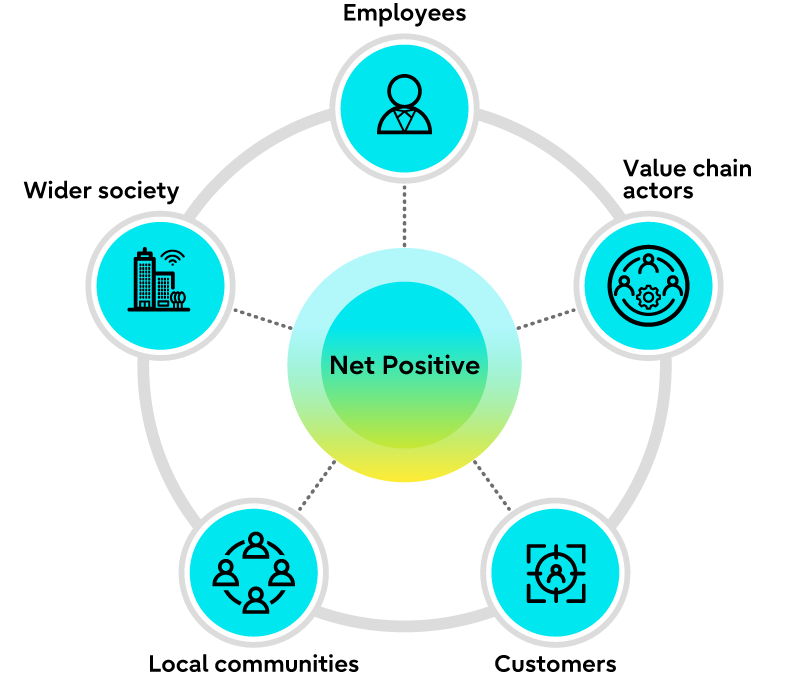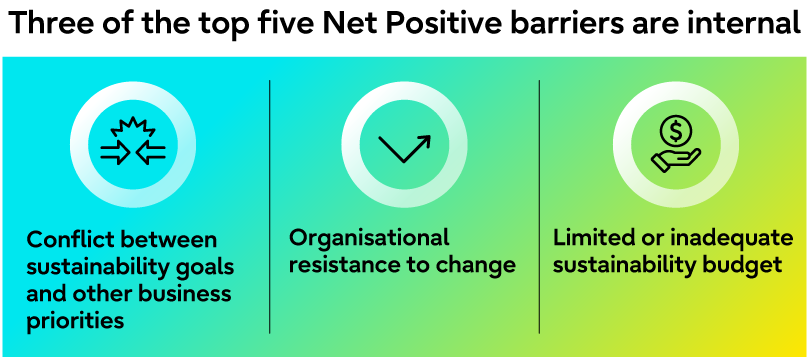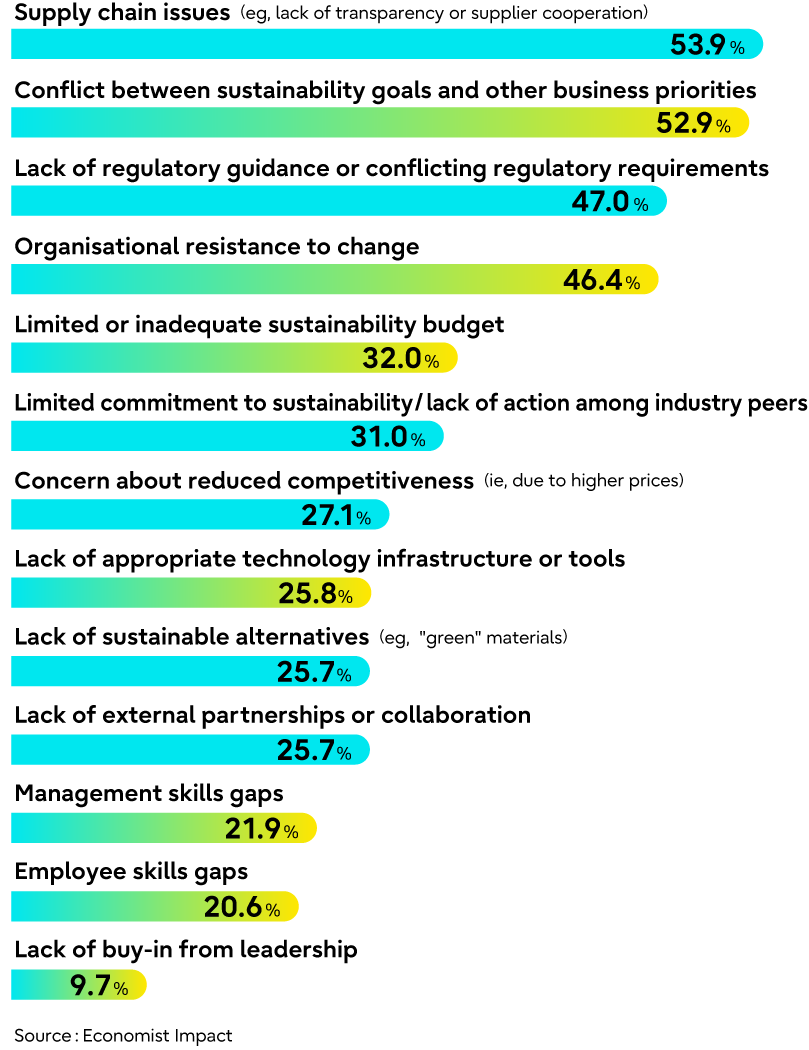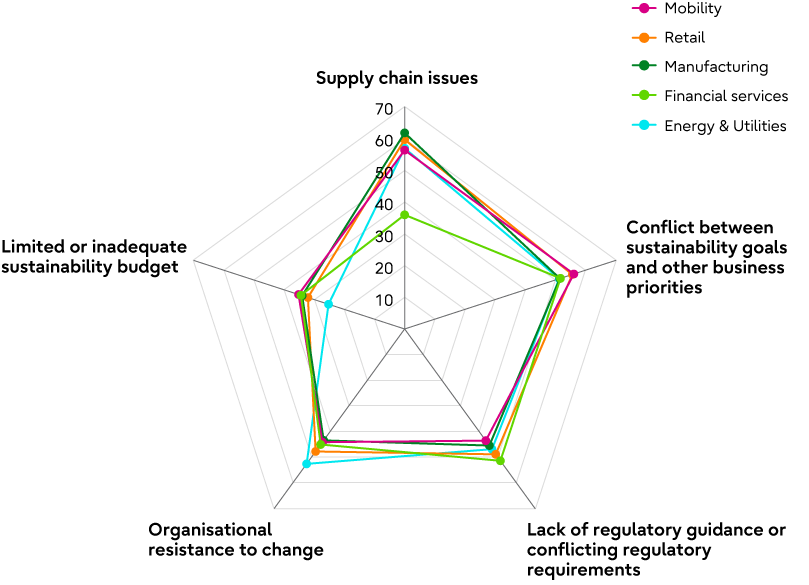What Is Net Positive? Key Barriers and How Companies Can Overcome Them

Article | 2025-7-28
10 minute read
"Net Positive" is more than a buzzword. It's a blueprint for future-ready business. It challenges companies to move beyond reducing their environmental and social footprint and instead become active contributors to a better world. Many business leaders already understand the value of this approach. Yet despite widespread recognition of its benefits, few companies have achieved Net Positive outcomes. What stands in the way? The biggest obstacles often come from within.
What does “Net Positive” mean?
Being Net Positive means that a company gives back more to society and the environment than it takes. This includes reducing emissions, adopting renewable energy, promoting inclusive employment, and investing in local communities.
Today, businesses are expected to grow in a way that also benefits society and the planet. This is no longer a "nice-to-have" strategy, but a business imperative. Organizations that embrace Net Positive thinking are more resilient, innovative, and aligned with the expectations of investors, customers, and employees.

To explore how companies are progressing toward this goal, Fujitsu’s Net Positive Index, developed and researched by Economist Impact, surveyed 1,800 executives and decision makers across five key industries—Retail, Manufacturing, Mobility, Financial services, and Energy & Utilities—in 17 countries.
The findings are compelling: Companies that lead in Net Positive are more likely to be on track to achieve their revenue, profit, and market share goals, and are also tracking ahead on investor confidence.
Yet the majority of companies still struggle to move the needle. The question is: why?
Organizational structure is key to why net positivity is not progressing
Executives widely recognize the value of going Net Positive. So why aren't more companies achieving it?
The answer lies in organizational design and priorities. Leaders see the benefits, but internal systems, structures, and mindsets often act as brakes.

Despite this broad understanding, execution is inconsistent. What’s preventing companies from turning ambition into action? A deeper look into the top five organizational barriers shows that three out of five are internal. This indicates that companies must focus inward to move forward.

Meanwhile, common assumptions such as skill gaps or lack of leadership support appear less frequently as barriers, suggesting that the root challenges lie not in people, but in how organizations are set up and run.

While industry-specific conditions vary, the types of challenges companies face are remarkably similar. Whether in finance, manufacturing, or energy, the top barriers tend to cluster around organizational alignment and culture.
This reinforces a critical insight: regardless of industry, many companies face similar internal challenges. Addressing these shared issues could be the most immediate and effective way to begin making Net Positive progress.

Internal Challenges and How to Address Them that Prevent Net Positive Promotion
External obstacles like supply chain volatility and unclear regulations can be complex and slow to resolve. Internal barriers, on the other hand, are often within a company’s control. The survey results above showed that 52.9% of companies experience conflict between sustainability goals and core business priorities, and 46.4% report organizational resistance to change.
These figures highlight the need for deeper alignment—between strategy, leadership, and organizational culture.
Three actions to start making progress
Overcoming internal friction is where real transformation begins. Here are three areas to focus on:
1. Align sustainability with core strategy
Don’t treat sustainability as a side project. Make it integral to business planning and leadership communication. When purpose is tied to long-term value, it becomes a unifying driver.
2. Address cultural resistance
To shift organizational behavior, leaders need to foster dialogue, build trust, and celebrate early wins. Changes in culture often start with changes in how people are recognized and rewarded. A structured change management approach can help embed this.
3. Know where you stand
Understanding your current state is essential. Tools that assess Net Positive maturity help identify gaps, prioritize next steps, and provide a shared roadmap across teams.
Visualizing the barriers and the path forward
To support companies in this journey, Fujitsu's Net Positive Assessment Tool, developed and researched by Economist Impact, helps provide a multi-dimensional snapshot of where an organization stands and how it compares to peers. This makes it easier to identify which internal levers to activate next.
Real progress toward Net Positive begins within. By focusing on the things you can change, such as your internal systems, strategy alignment, and organizational culture, you set the stage for broader, lasting impact.
Even small steps toward internal change can unlock momentum for long-term transformation.
Michiyo Hano
Manager,
Global Marketing Unit, Marketing Strategy division, Corporate Insights team, Fujitsu Limited
Joined Fujitsu in October 2023
after working as a reporter for Nikkei BP, ZDNet and ASCII, editor in chief of MSN Japan and social media marketing lead for Microsoft Japan.

Are you Net Positive ready?
Discover how your organization is advancing toward a thriving, Net Positive future.


